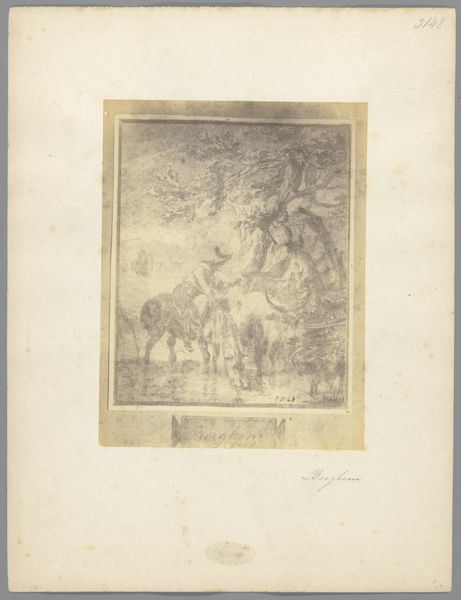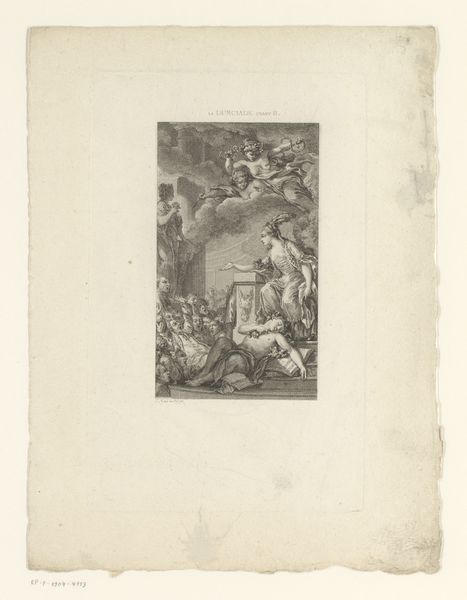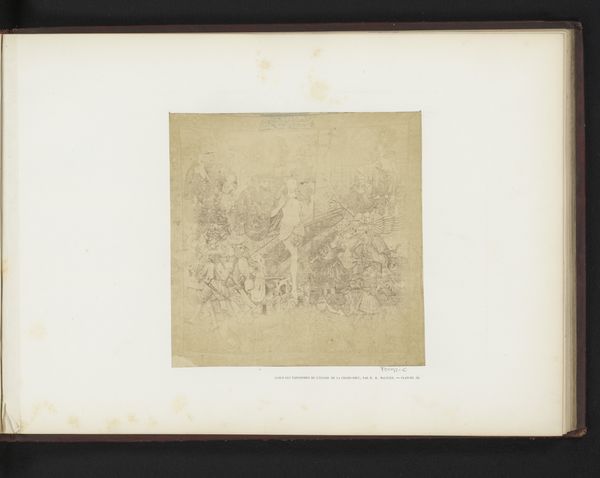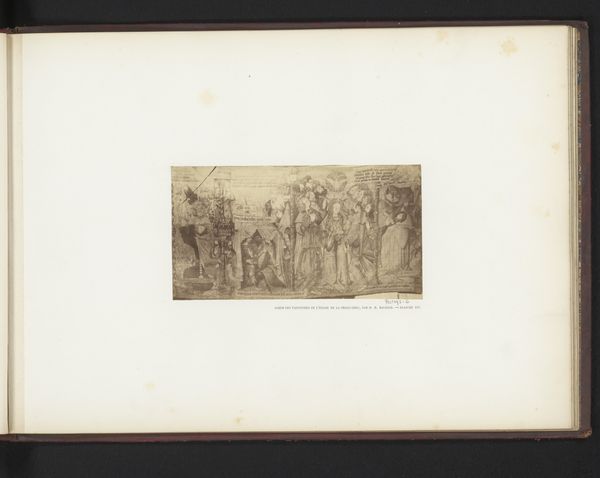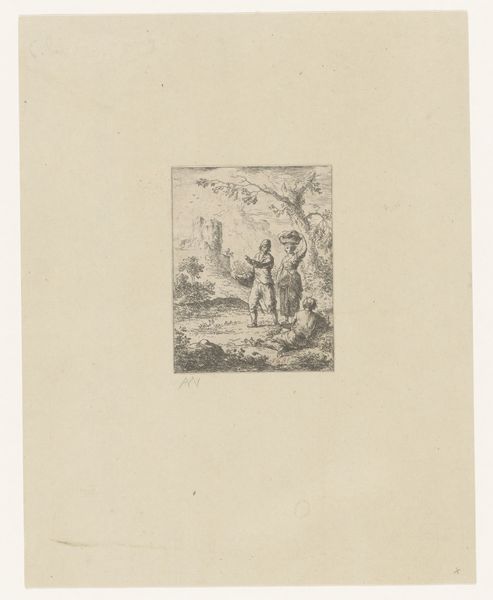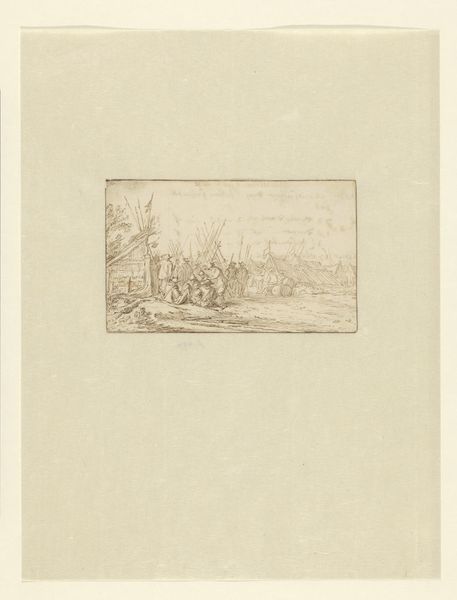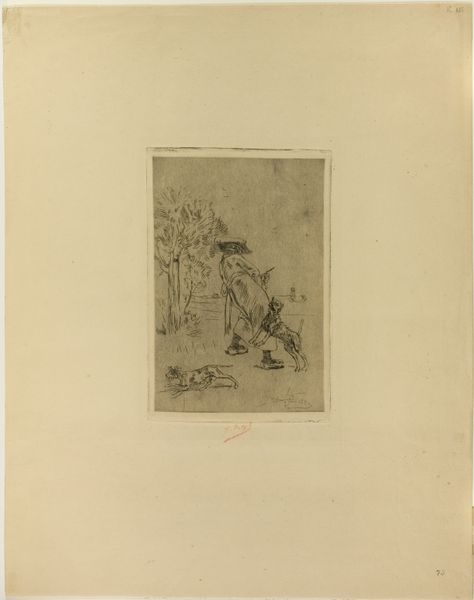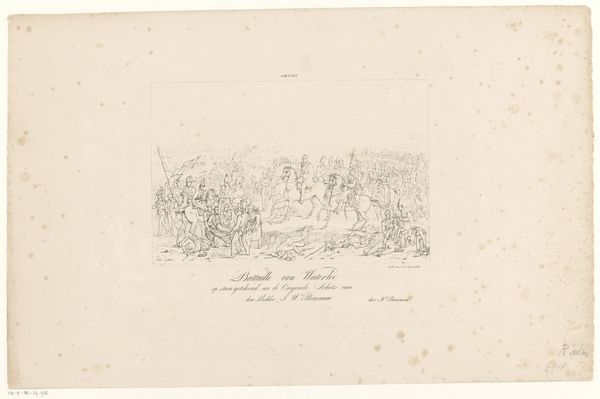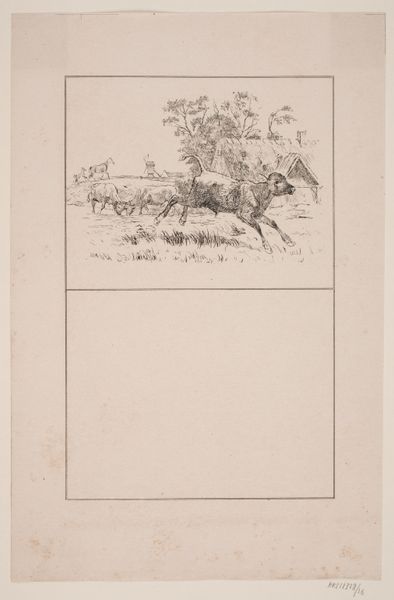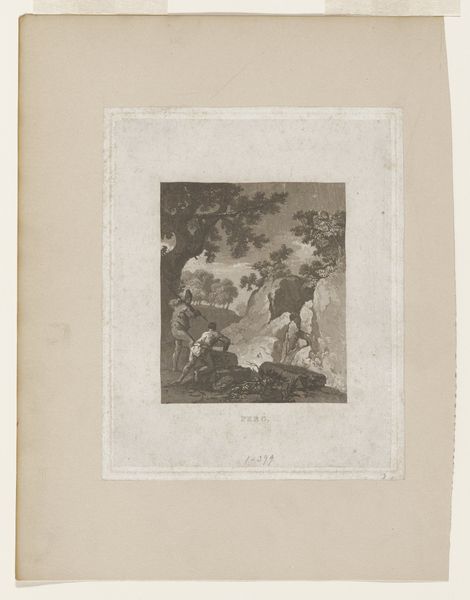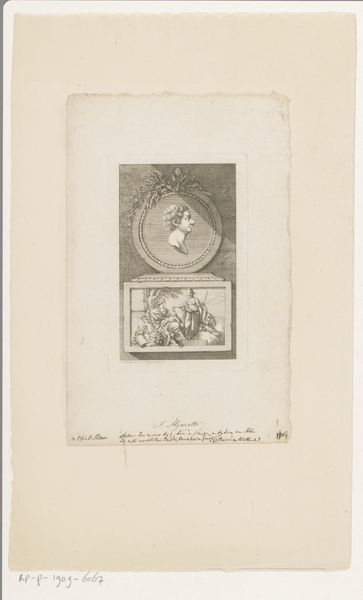
Fotoreproductie van een tekening voorstellende de Hemelvaart van Titiaan 1851 - 1878
0:00
0:00
drawing
#
drawing
#
figuration
#
history-painting
#
italian-renaissance
Dimensions: height 199 mm, width 127 mm, height 320 mm, width 240 mm
Copyright: Rijks Museum: Open Domain
Curator: This is a photo reproduction of a drawing depicting Titian's Assumption of the Virgin. It was created sometime between 1851 and 1878 by Giovanni Brampton Philpot. The original artwork that Philpot copied is much older, created by the master Titian himself. Editor: Gosh, the immediate feel is like a hazy memory surfacing. It’s all upward motion, a whirlwind of bodies lifting into light. You can almost feel the heat radiating off that crowd at the bottom. Curator: Right, Philpot, through this reproductive drawing, highlights a central moment in the art historical canon. But it is also a copy, pointing to questions about authenticity, artistic labor, and the rise of mechanical reproduction in art. We are seeing Titian mediated by nineteenth-century processes. Editor: It makes me think about how the Renaissance masters were mythologized in later centuries, becoming untouchable idols. I wonder if Philpot felt pressure, even through a reproduction, to live up to such an iconic painter, Titian? Did he think of this reproductive practice as homage? Or merely, a craft? Curator: Perhaps a bit of both, really. Think of the materials at hand: the photographic process, the ink, the paper itself all becoming critical actors in the dissemination and reinterpretation of Titian's work. Mass production alters not only availability, but how we value an image. Editor: Yes! This drawing also points toward the role of drawing itself. We think about materiality in terms of paper, line, and weight. I almost forget about the human hand, which is crucial, both Titian's original labor, and Philpot’s too. It's a chain of handiwork—even if some links are machines, ultimately labor gives us what we perceive and enjoy here today. Curator: Absolutely, tracing the social and economic layers offers us insight. What do you make of that earthly crowd versus the angelic flurry? Editor: To me, the bottom of the drawing shows figures that seem tethered to this earth with a desire to reach toward the heavenly. Even their postures feel active, desiring. So there is an aspirational hope! The work then feels human: deeply spiritual but equally embedded within a human narrative, even within earthly textures of charcoal and light.
Comments
No comments
Be the first to comment and join the conversation on the ultimate creative platform.
